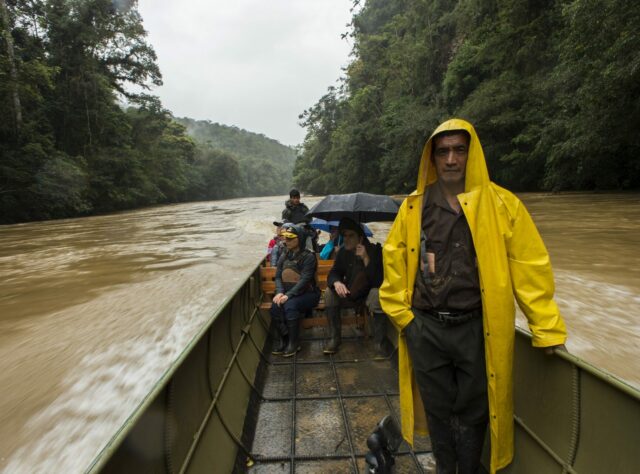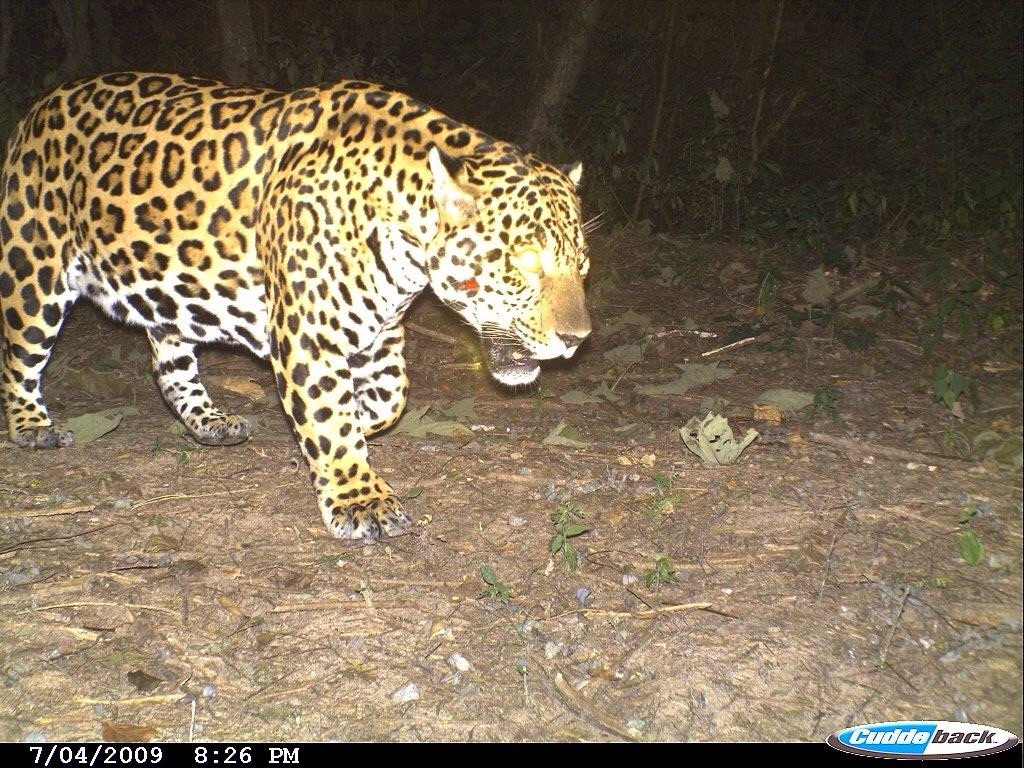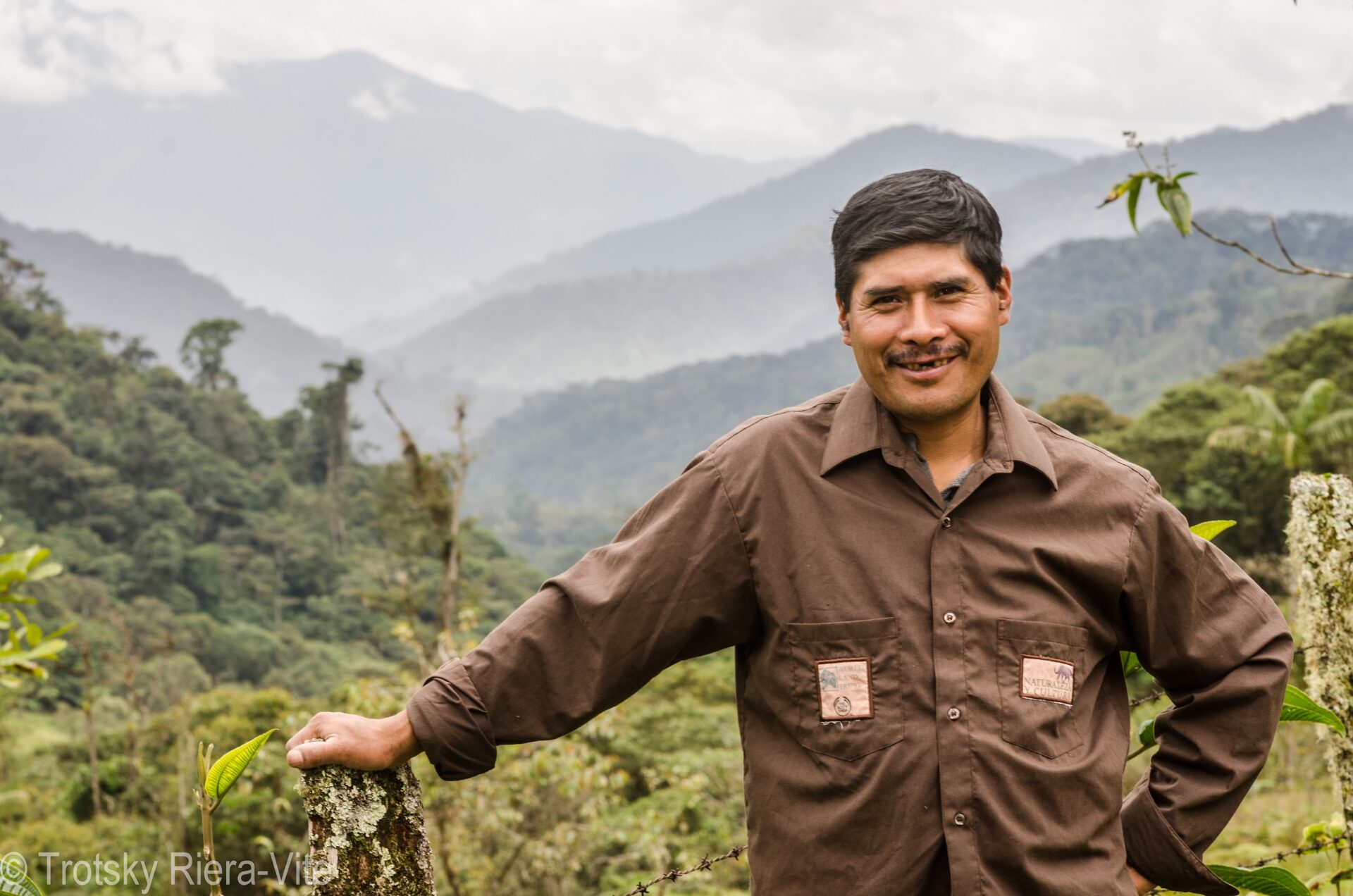
Segundo Vélez is one of the rangers tasked with patrolling Nangaritza Reserve, managed by Naturaleza y Cultura Ecuador. Image: Fabian Rodas
As we approach the end of 2020, we caught up with our partners around the world to find out how they’ve navigated this year. In the final instalment of our three-part series (follow the links ahead to read parts one and two), you’ll discover spectacular conservation wins as well as challenges they’ve had to overcome.
Fundación Biodiversidad Argentina (FBA)
Victoria Lichtschein, Treasurer
2020 challenges
“The biggest challenge was mainly related to the difficulties in circulating and in carrying out field work in times of the global pandemic. This made it hard to reach El Pantanoso Reserve, assess the area, and check the camera traps. This could only be accomplished a couple of times.”
2020 highlights
“The greatest conservation victory of the year was most certainly firefighting with a certain degree of success. A contingency plan coordinated by the national and provincial governments was implemented, and although large areas were caught in the fire and burnt down, El Pantanoso was protected and suffered little damage. We also coordinated with firefighters in neighbouring Calilegua National Park, providing materials for them to survive while carrying out their difficult task.”

El Pantanoso is part of the Yungas ecoregion, which hosts the largest uninterrupted stretch of Jaguar habitat in Argentina. Image: Francesco Rocca
Naturaleza y Cultura Ecuador (NCE)
Karina Copen, Director of Foundation & Strategic Partnerships, Nature and Culture International
2020 challenges
“The quarantine has limited NCE’s ability to work in the field. Some processes were suspended, others slowed down. Additionally, rural communities have turned to illegal activities such as mining, hunting and logging due to an increase in unemployment and a drop in income. Moreover, the mobility restrictions and the budget reductions of State-controlled entities have limited the surveillance, monitoring and punishment for illegal activities, which has increased the threats on the areas where we work.”
2020 highlights
“This year we developed the first official guide and procedures for the declaration of Water Protection Areas in Ecuador, a national-level category of protection that defends critical water sources from extractives. We also led the effort to build the National Standard of Connectivity Corridors together with 53 organisations, facilitating the official declaration of the first Connectivity Corridor in Ecuador which spans 400,000 acres. From the dry forest to the cloud forest in southern Ecuador, we helped create 308,000 acres of new protected areas!”

NCE ranger Angel Andrade in Jambué Reserve. Image: NCE / © Trotsky Riera-Vite
Fundación EcoMinga, Ecuador
Lou Jost, Director
2020 challenges
The impact of COVID-19 was felt keenly at EcoMinga. “It not only infected several of our staff and Keepers of the Wild, but also caused the complete economic collapse of the communities around our reserves,” explains Lou. Local people had to “hunt animals … steal medicinal trees … and beg for food in the streets” in order to survive. “The best we could do was try to give some temporary food aid,” says Lou. “The magnitude of the problem was (and still is) far larger than anything we could solve … but we have probably gotten through the worst of it.”
2020 highlights
“This year we confirmed that a spectacular Magnolia tree in our Manduriacu Reserve is a new species. The discovery of a new Magnolia is always a major event, a dream of many botanists. And if that wasn’t enough, this year also saw the publication of an entire new genus of mammal, Pattonimus, based on one new species discovered in Manduriacu and another new species discovered in our Dracula Reserve. These astonishing discoveries, coinciding with WLT’s decision to support Manduriacu (a reserve that has been difficult to fund), give us enormous satisfaction.”

Lou Jost presenting at the Orchids of Baños event held at Dunhill London’s Bourdon House, 2015. Image: David M. Benett
Naturalia, Mexico
Oscar Moctezuma Orozco, Founding Director
2020 challenges
“The economic impact of the pandemic has been very strong in Mexico,” writes Oscar, “so finding the funds that in the past were available in the private sector to support our projects has become a real challenge.” For Naturalia, the “biggest challenge” of the year has been “keeping the operations going ahead and the morale of our team high”. Oscar stresses that his staff “have a deep devotion for conservation,” but they find themselves in a “complex scenario … the immediate future for this activity doesn’t look easy now”.
2020 highlights
“We are proud to have reached 30 years old this year, which is itself a big achievement in a country with such low support for conservation activities. We now have about 50,000 followers on social media, which is proof of the influence we have in Mexican society. Thanks to our prestige and recognition, a conservation group in the borderlands (Sky Island Alliance) have asked us to join them in facing the threats posed by the US border wall, while a group of organisations working to preserve Mexico’s last tropical rainforest have invited us to join their strategy team.”

Naturalia’s Jaguar del Norte Reserve covers 50,000 acres in the Mexican state of Sonora. Image: Naturalia, A.C. / © Jaime Rojo
Wildlife Trust of India
Upasana Ganguly, Manager and Head, Right of Passage: Elephant Corridors Project
2020 challenges
This year, “COVID-19 affected the mobilisation of requisite resources” for WTI’s conservation projects, writes Upasana. “Coordinated efforts between stakeholders (government and non-government agencies), which form a key part of the conservation action we do at WTI, was a challenge. Restrictions on gatherings meant that we couldn’t fully implement our awareness campaigns, another important aspect of our conservation efforts to mobilise public and political will.”
2020 highlights
“A conservation victory which we are particularly proud of this year has to be our decade-long effort to secure the Wayanad Elephant Corridor, now consolidated and published in the form of a conservation action report. This has been one of WTI’s most successful projects and stands as a role model, showing that space can be made for the coexistence of both people and wildlife in a densely populated country like India. During the pandemic, our field teams took care of wildlife, managed human-wildlife conflict, and supported local communities and healthcare workers.”

WTI’s Balsreng Sangma meets with a nokma (village headman) and his secretary to discuss the extension of their Village Reserve Forest. Image: WTI
WLT don’t manage reserves directly. We believe that working with local organisations is the best way to ensure effective conservation management, providing a better future for threatened habitats and endangered wildlife.
Our partners work on the front lines of conservation – they’re the rangers patrolling forests, the scientists conducting research, the outreach officers engaging with local communities. Without them, nature would lose some of its most valuable defenders.
Providing funding for our partners’ conservation efforts is the most critical part of WLT’s work. It’s also the best thing you can do if you care about the natural world. With a donation to our Action Fund, you can ensure resources reach natural reserves when they need it the most.
